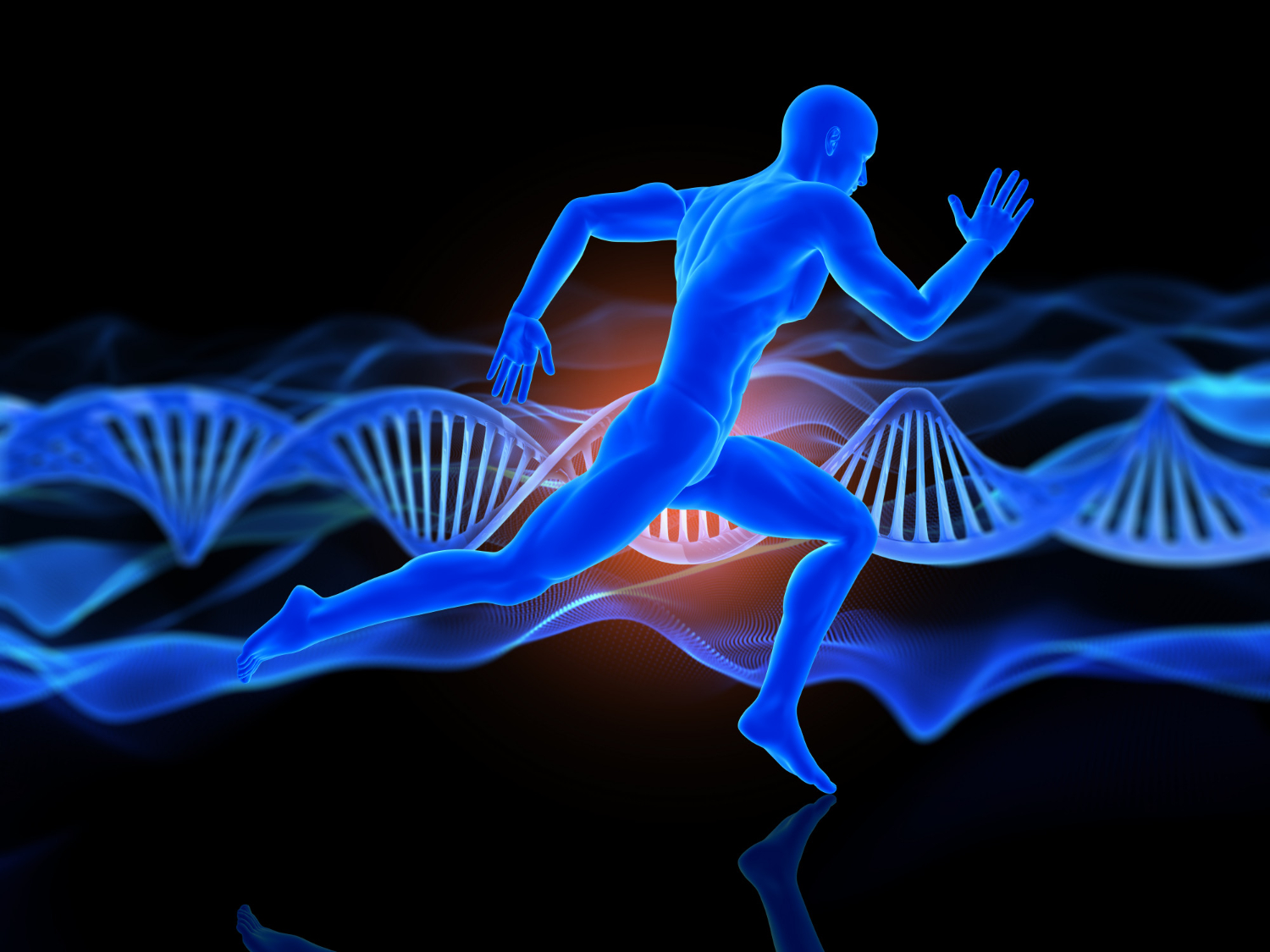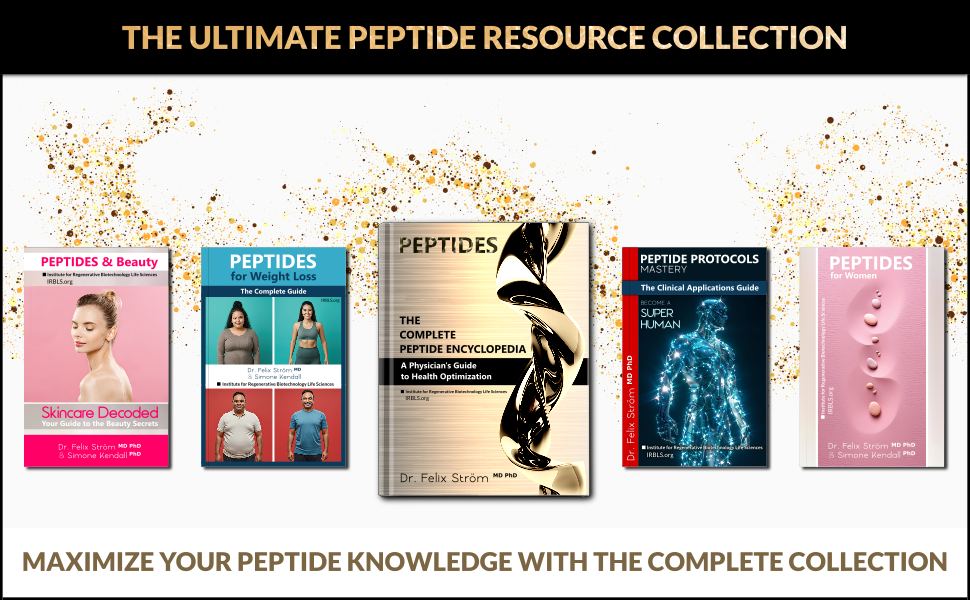Building a Better Physique: How Peptides Can Amplify Muscle Growth and Athletic Performance
Unleash Your Athletic Potential: The Role of Peptides in Muscle Development and Peak Performance
For athletes, bodybuilders, and fitness enthusiasts, the quest for enhanced muscle growth, superior strength, and faster recovery is a constant pursuit. While dedication to rigorous training and meticulous nutrition forms the bedrock of progress, cutting-edge scientific advancements are offering new avenues to optimize these efforts. Peptides have emerged as a powerful class of compounds that can significantly contribute to building a better physique and unlocking new levels of athletic performance. At the Institute for Regenerative Biotechnology & Life Sciences (IRBLS), we are committed to exploring and explaining these innovations. This article will delve into how specific peptides can amplify muscle development, improve strength, and accelerate recovery, helping you understand their potential role in your fitness journey.
Traditional approaches to muscle building often focus solely on macronutrient intake and training variables. However, the body’s ability to build muscle and perform optimally is intricately regulated by a complex interplay of hormones and growth factors. Peptides offer a way to modulate these internal signaling pathways, potentially leading to more significant and efficient gains.
How Peptides Contribute to Muscle Growth and Enhanced Performance
Peptides can influence muscle development and athletic capabilities through several key mechanisms:
- Stimulating Growth Hormone (GH) Release: Growth hormone is a pivotal anabolic hormone that promotes muscle protein synthesis, lean body mass accretion, and fat metabolism. Certain peptides, known as GH secretagogues, can stimulate the pituitary gland to produce and release more of its own GH.
- Increasing Insulin-Like Growth Factor 1 (IGF-1) Levels: GH exerts many of its anabolic effects by stimulating the liver to produce IGF-1. IGF-1 directly promotes muscle cell proliferation (hyperplasia) and differentiation, leading to muscle growth (hypertrophy).
- Enhancing Protein Synthesis: By providing the necessary hormonal signals, peptides can directly increase the rate at which muscle cells build new proteins, the fundamental process of muscle repair and growth.
- Promoting Fat Loss: Many muscle-building peptides also have fat-burning properties, leading to improved body composition – more muscle and less fat.
- Accelerating Recovery: Some peptides can reduce inflammation, improve blood flow to damaged tissues, and speed up the repair of muscle fibers, tendons, and ligaments, allowing for more frequent and intense training sessions.
- Improving Endurance and Stamina: Certain peptides may enhance oxygen utilization, nutrient delivery, or reduce the perception of fatigue.
Key Peptides for Muscle Growth and Athletic Enhancement
Several peptides have gained prominence for their ability to support muscle growth and athletic performance. It is crucial to reiterate that their use should always be under the supervision of a qualified healthcare professional.
1. Growth Hormone Releasing Peptides (GHRPs) and Growth Hormone Releasing Hormones (GHRHs)
This category includes some of the most well-known peptides for muscle building:
- GHRP-6, GHRP-2, Ipamorelin, Hexarelin: These are GHRPs that stimulate GH release by acting on the ghrelin receptor. Ipamorelin is often favored for its selectivity, as it tends to release GH without significantly affecting cortisol or prolactin levels.
- CJC-1295 (with or without DAC), Sermorelin, Tesamorelin: These are GHRH analogs that also stimulate the pituitary to release GH, but through a different receptor. CJC-1295 with DAC (Drug Affinity Complex) has a longer half-life, providing a more sustained elevation of GH levels.
The Power of Stacking: Often, a GHRH analog (like CJC-1295) is combined or “stacked” with a GHRP (like Ipamorelin). This combination can have a synergistic effect, leading to a more potent and natural-patterned release of GH than either peptide used alone. This approach is highly regarded for promoting lean muscle gains, fat loss, and improved recovery.
2. IGF-1 Derivatives (e.g., IGF-1 LR3, IGF-1 DES)
Insulin-Like Growth Factor 1 (IGF-1) is a primary mediator of growth hormone’s anabolic effects on muscle tissue. While recombinant human GH (rhGH) itself is a prescription drug, certain modified IGF-1 peptides are explored for their potent muscle-building capabilities.
- IGF-1 LR3: This is a long-acting analog of IGF-1. The “LR3” modification extends its half-life, allowing it to remain active in the body for a longer period. It is known for its strong anabolic effects, promoting muscle cell proliferation and differentiation.
- IGF-1 DES: This is a shorter-acting, truncated version of IGF-1 that is thought to be more potent on a milligram-for-milligram basis in specific local tissues. It is sometimes used for site-specific muscle growth, although the evidence for this is more anecdotal.
These IGF-1 derivatives are powerful anabolic agents and require careful consideration and expert guidance due to their potential to affect various physiological processes.
3. Mechano Growth Factor (MGF) and PEG-MGF
MGF is a splice variant of IGF-1 that is specifically expressed in muscle tissue in response to mechanical stress (like resistance training). It plays a crucial role in muscle repair and the activation of muscle satellite cells (stem cells for muscle tissue).
- PEG-MGF: To increase its stability and half-life in the body, MGF is often pegylated (attached to a polyethylene glycol molecule), creating PEG-MGF. This peptide is used to enhance muscle recovery and promote localized muscle growth, particularly after intense workouts.
4. Follistatin 344
Follistatin is a protein that inhibits myostatin. Myostatin is a negative regulator of muscle growth; essentially, it puts the brakes on how much muscle your body can build. By inhibiting myostatin, Follistatin can theoretically lead to significant increases in muscle mass.
- Why it’s notable: Follistatin 344 is a specific isoform that has shown promise in research for its muscle-building potential. However, its use is still largely experimental, and long-term effects and safety require more investigation.
5. BPC-157 and TB-500 (Thymosin Beta-4)
While not direct muscle builders in the anabolic sense, BPC-157 and TB-500 are crucial for athletes due to their profound effects on injury repair and recovery.
- BPC-157: As mentioned in our guide to top peptides, BPC-157 accelerates the healing of muscles, tendons, and ligaments. This allows athletes to recover faster from injuries and train harder.
- TB-500: This synthetic version of a naturally occurring peptide promotes healing, reduces inflammation, and improves flexibility. It is often used for treating acute and chronic injuries.
Faster and more complete recovery is indirectly anabolic, as it allows for more consistent and progressive training, which is the ultimate stimulus for muscle growth.
For individuals seeking to understand the foundational principles of how peptides can contribute to enhanced vitality and even help one “Become a Super Human” through optimized physical and mental states, “Peptides Book: The Complete Beginners Guide To Peptides – Hack Secrets Of Longevity And Vitality – Become a Super Human” offers an excellent introduction. This book from The Peptide Book Collection Series makes complex science accessible. You can explore this beginner-friendly guide here.
Furthermore, for a deep dive into the vast array of peptides, including those relevant to muscle growth, performance, and overall health optimization, “PEPTIDES – The Complete Peptide Encyclopedia: A Physician’s Guide to Health Optimization” serves as an indispensable and comprehensive reference. This cornerstone of The Peptide Book Collection Series is designed for both individuals seeking thorough knowledge and physicians. Discover the encyclopedia here.
Important Considerations for Using Peptides for Muscle Growth
- Legality and Regulation: The regulatory status of many peptides can be complex and varies by region. Some are available only via prescription from a compounding pharmacy, while others may be sold for “research purposes only,” which carries risks regarding product quality and purity.
- Quality and Purity: Sourcing peptides from reputable channels under medical guidance is paramount to ensure you are getting a safe and effective product.
- Professional Supervision: Due to their potent effects and potential for side effects if misused, peptide therapy for muscle growth should always be overseen by a healthcare professional experienced in this area. They can help with appropriate selection, dosing, and monitoring.
- Realistic Expectations: Peptides can enhance results, but they are not a substitute for consistent training, proper nutrition, and adequate rest.
- Potential Side Effects: Depending on the peptide, potential side effects can range from water retention and numbness/tingling (often associated with GH elevation) to changes in blood sugar or other hormonal fluctuations. These are generally manageable under medical supervision.
For healthcare professionals and informed individuals looking to understand the precise clinical applications and protocols for various performance-enhancing and regenerative peptides, “Peptide Protocols Mastery: The Clinical Applications Guide – Unlocking the Secrets to Health, Healing, and Longevity” provides detailed, evidence-based strategies. This practical guide from The Peptide Book Collection Series is key to effective and safe implementation. Explore the mastery guide here.
IRBLS: Advancing Knowledge in Performance Optimization
Peptides offer exciting possibilities for individuals looking to maximize their muscle growth, enhance athletic performance, and accelerate recovery. By working with the body’s natural signaling systems, they represent a more targeted and potentially safer approach compared to some traditional performance-enhancing substances.
At IRBLS, we encourage a responsible and informed approach to any health or performance optimization strategy. Understanding the science behind peptides, their benefits, and their risks is the first step. We invite you to explore The Peptide Book Collection Series to further your knowledge and empower your journey towards achieving your peak physical potential.


0 Comments